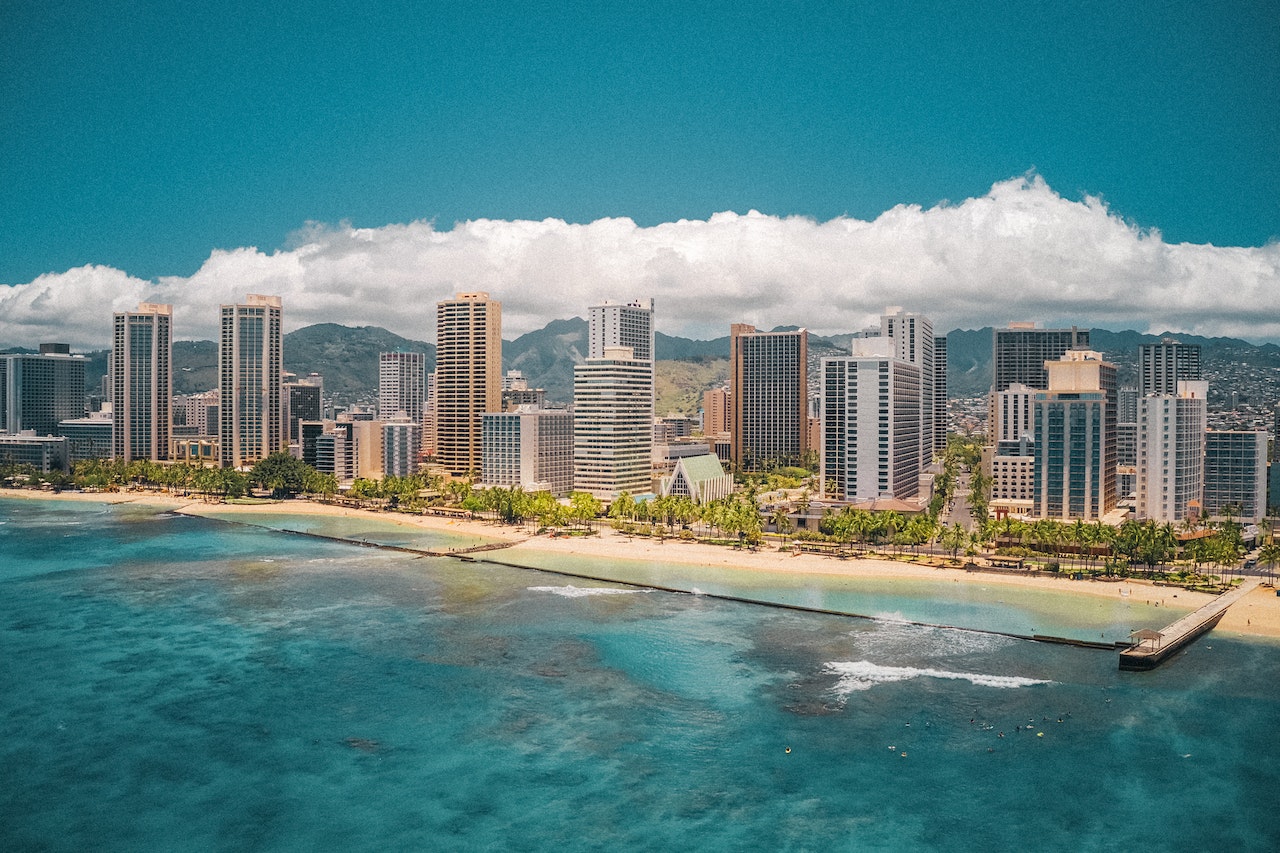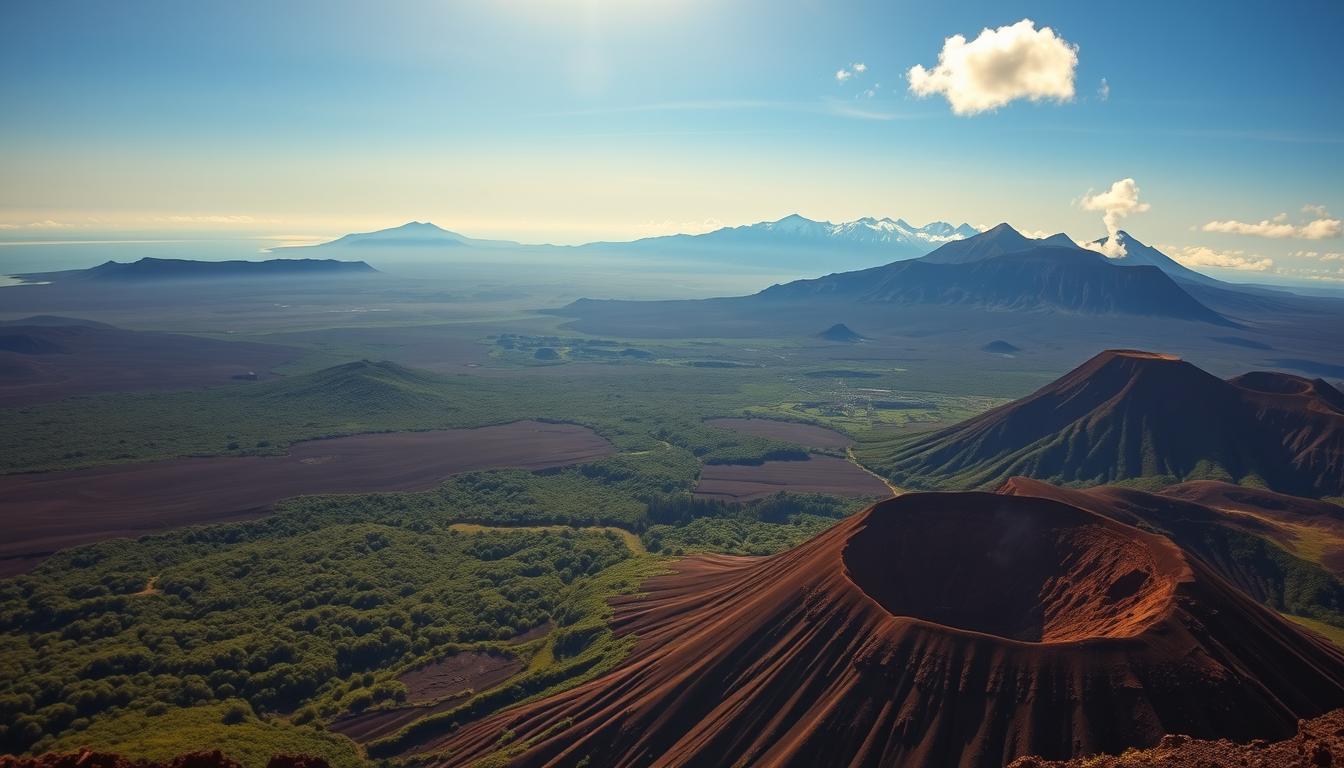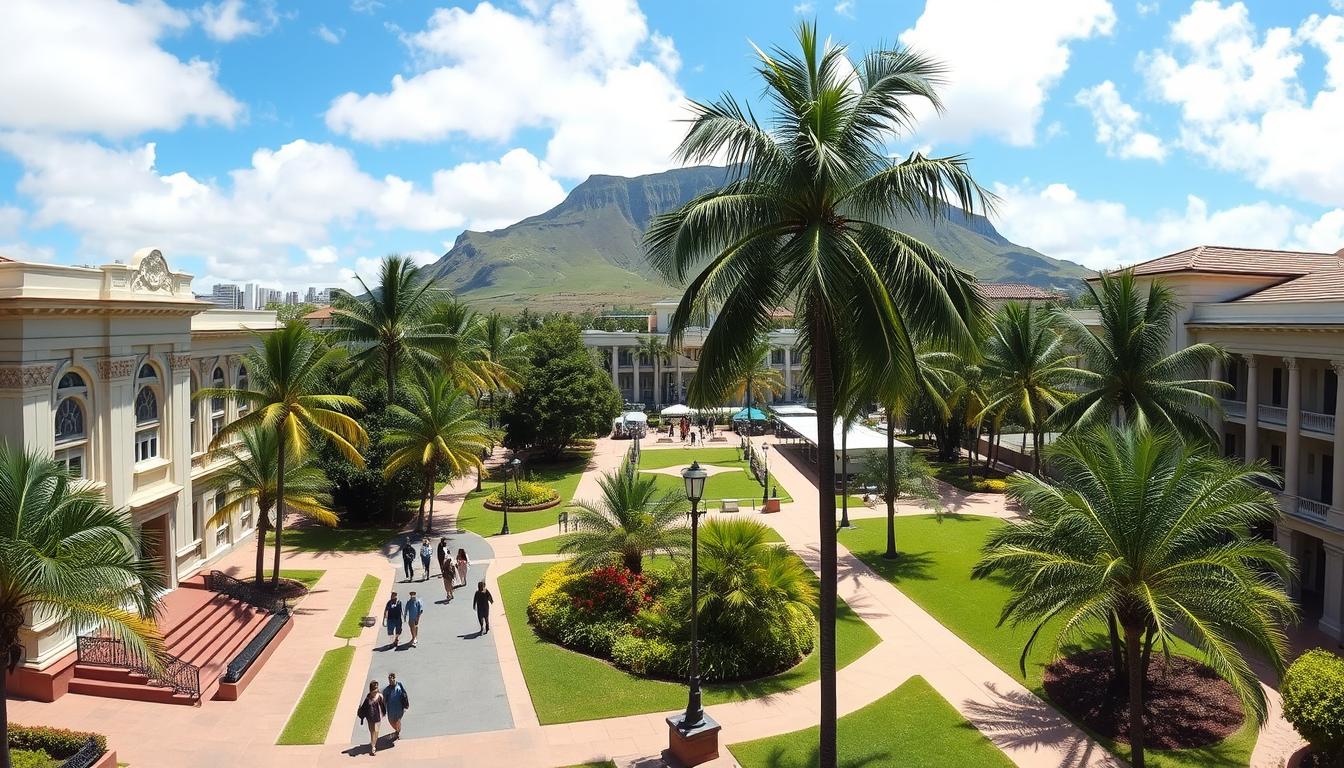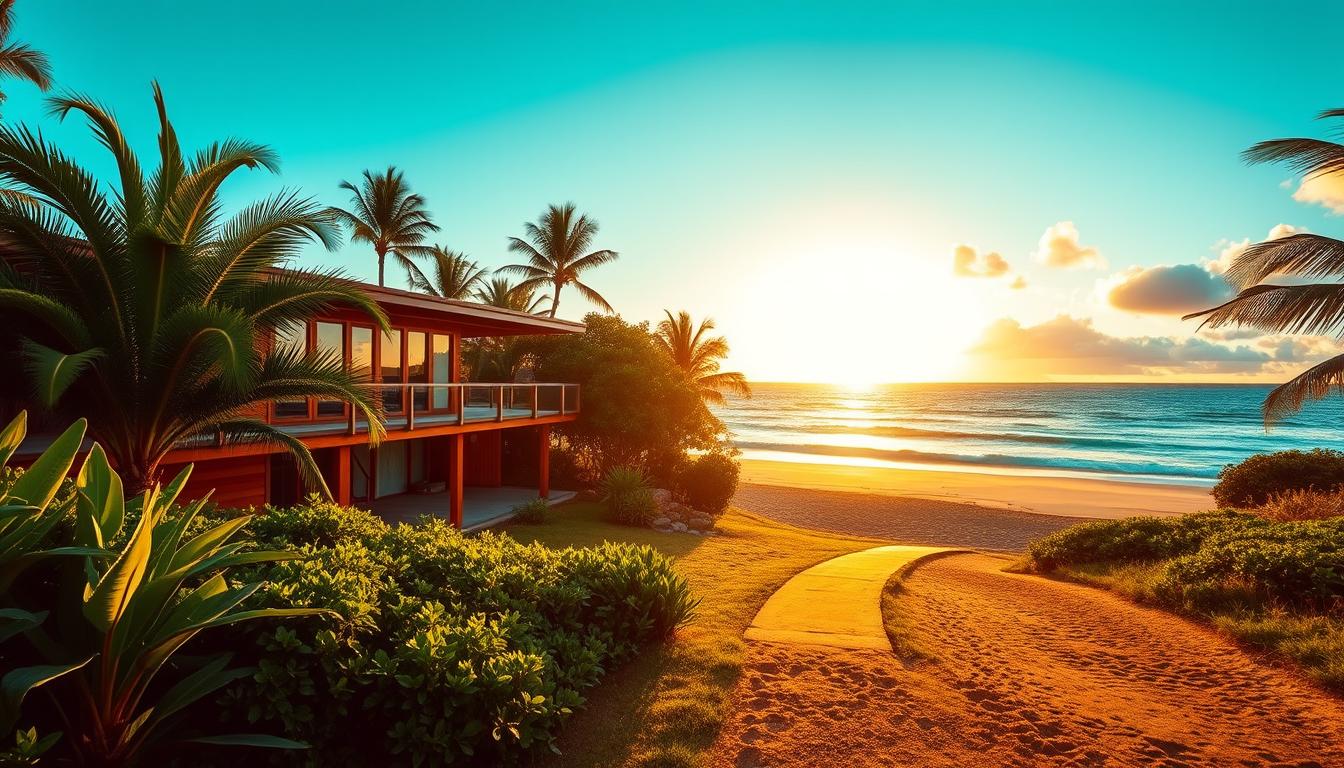A first-of-its-kind study by the National Oceanic and Atmospheric Administration (NOAA) has revealed the vast inventory of shipwrecks and submerged aircraft in Hawaiian waters, serving as an underwater history museum waiting to be discovered. With over 1,475 naval aircraft and more than 2,100 known or reported submerged resources, Hawaii boasts a rich underwater cultural heritage that tells the stories of ancient Hawaiian fishponds, shipwrecks, and more.
Key Takeaways
- Hawaii is home to a vast inventory of shipwrecks and submerged aircraft, making it an underwater history museum.
- There are over 1,475 naval aircraft and more than 2,100 known or reported submerged resources in Hawaiian waters.
- These underwater sites offer insights into ancient Hawaiian fishponds, shipwrecks, and more.
- The underwater cultural heritage of Hawaii is a valuable treasure that needs to be preserved.
- Exploring these historical sites provides a deeper understanding of Hawaii’s rich heritage.
Uncovering Hawaii’s Submerged Historical Landscape
Dr. Hans Van Tilburg, a maritime historian and underwater archaeologist for NOAA, has led a three-year study to inventory underwater cultural resources in Hawaiian waters. The findings of this study have revealed the fascinating submerged historical landscape of Hawaii, which includes remains of ancient Hawaiian fishponds, shipwrecks, and even aircraft. These hidden historical sites provide valuable insights into Hawaii’s past and its cultural significance.
The underwater cultural heritage of Hawaii is a testament to the rich history and vibrant culture of the islands. The study conducted by NOAA has uncovered over 1,475 naval aircraft and more than 2,100 known or reported submerged resources, showcasing the extensive historical treasures that lie beneath the surface. These sites tell stories of long-lost civilizations, ancient trade routes, and significant events in Hawaiian history.
Exploring these ancient sites in Hawaii offers a unique opportunity to connect with the past and gain a deeper understanding of the islands’ cultural heritage. From the fishponds that once sustained ancient Hawaiian communities to the remnants of shipwrecks that bear witness to the island’s maritime history, each site holds its own significance and provides a glimpse into Hawaii’s rich and diverse past.
Unseen Historical Sites in Hawaii
Table: Examples of Submerged Historical Sites in Hawaii
| Site | Description |
|---|---|
| Ancient Hawaiian Fishponds | These fishponds were innovative systems designed by ancient Hawaiians to sustainably cultivate fish for the community. |
| Shipwrecks | The remains of sunken ships provide a window into Hawaii’s maritime history and the challenges faced by early explorers. |
| Submerged Aircraft | The presence of submerged aircraft highlights the role of Hawaii as an important military and transportation hub. |
“The underwater cultural resources in Hawaii offer an unparalleled opportunity for archaeologists and historians to piece together the puzzle of Hawaii’s past,” says Dr. Hans Van Tilburg. “These sites not only reveal the technological advancements of ancient Hawaiians but also shed light on their cultural practices and way of life.”
A visit to these cultural sites of Hawaii is a chance to immerse oneself in the history and traditions of the islands. However, it is important to approach these sites with respect and reverence. Visitors should obtain permission from the relevant authorities, adhere to any guidelines or regulations in place, and avoid disturbing or removing any artifacts. By preserving and appreciating these hidden historical treasures, we can ensure that future generations have the opportunity to explore and learn from Hawaii’s rich cultural heritage.
Preserving Hawaii’s Underwater Cultural Heritage
The extensive underwater cultural resources in Hawaii serve as a reminder of the state’s rich history. These preserved historical treasures offer a unique glimpse into the past and provide valuable insights into Hawaii’s maritime heritage. It is important to visit these sites responsibly and with respect for their preservation.
Hawaiian Historical Attractions
The underwater cultural heritage of Hawaii includes numerous shipwrecks and submerged artifacts, such as naval aircraft, that have been discovered through the efforts of organizations like the National Oceanic and Atmospheric Administration (NOAA). These sites represent significant historical attractions that highlight the state’s connection to its maritime past.
“Exploring the underwater historical sites in Hawaii is like stepping back in time. It’s a fascinating experience that allows you to witness the remnants of ancient shipwrecks and discover the stories they hold. These preserved treasures are a testament to the rich cultural heritage of Hawaii and should be respected and protected for future generations.”
When visiting these underwater sites, it is crucial to obtain permission from the relevant authorities, such as Kaupo Ranch, before exploring them. This ensures that proper protocols are followed and helps protect the delicate nature of these historical attractions. Visitors should also refrain from touching or removing any artifacts, as they play an essential role in understanding and preserving Hawaii’s underwater cultural heritage.
| Preserving Hawaii’s Underwater Cultural Heritage | Hawaiian Historical Attractions |
|---|---|
| Visit these sites responsibly | Discover shipwrecks and submerged artifacts |
| Obtain permission from relevant authorities | Learn about Hawaii’s maritime heritage |
| Respect and protect the sites | Experience the rich cultural heritage of Hawaii |
The Role of Religion in Hawaiian Culture
Religion held immense significance in ancient Hawaiian culture, permeating every aspect of daily life. The Hawaiians worshipped a diverse pantheon of gods, including Akua, who represented the various elements of nature, and ‘aumakua, ancestral protective gods. Each major deity had its own hereditary priesthood, distinct ceremonies, and dedicated temples called heiau.
“Hawaiians believed that maintaining harmonious relations with these spirits was crucial for the land’s prosperity and the well-being of its inhabitants.”
The elaborate rituals and offerings performed at the heiau played a vital role in ensuring the success and prosperity of the land. The religious practices were deeply intertwined with the social structure, governance, and preservation of the natural balance in Hawaiian society.
The ancient Hawaiians held steadfast belief in the power of their gods, seeking their guidance and protection through prayer and offerings. The priests, known as kahuna, acted as intermediaries between the human and divine realms, performing sacred rituals and communicating with the gods on behalf of the community.
Hawaiian Gods
The Hawaiian pantheon consisted of numerous gods, each with their own distinctive roles and attributes. Here are some of the prominent deities worshipped by the ancient Hawaiians:
- Kāne: The god of creation, associated with the life force and growth.
- Kū: The god of war and male energy, often depicted as a fierce warrior.
- Lono: The god of peace, fertility, and agriculture, associated with abundance and rain.
- Kanaloa: The god of the ocean, often associated with healing and abundance of marine resources.
- Pele: The goddess of volcanoes and fire, revered as a powerful and unpredictable force of nature.
The ancient Hawaiian religion was a vital component of their cultural identity, shaping their worldview, rituals, and interactions with the natural and spiritual realms. Today, the remnants of these religious practices can still be seen in the preserved heiau and the reverence for the land and its spiritual connection within Hawaiian culture.
| Hawaiian Gods | Roles and Attributes |
|---|---|
| Kāne | The god of creation, associated with the life force and growth. |
| Kū | The god of war and male energy, often depicted as a fierce warrior. |
| Lono | The god of peace, fertility, and agriculture, associated with abundance and rain. |
| Kanaloa | The god of the ocean, often associated with healing and abundance of marine resources. |
| Pele | The goddess of volcanoes and fire, revered as a powerful and unpredictable force of nature. |
The Kapu System: Ancient Hawaiian Laws
The ancient Hawaiian culture had a strict system of laws known as the kapu system. Derived from religious authority, the kapu system governed behavior within the highly rigid and ranked society. It prescribed specific rules and prohibitions (kapu) that dictated daily interactions and maintained social control. The kapu system separated the classes, established environmental controls, and preserved the balance in nature. Violations of the kapu system were met with severe penalties, including death.
Under the kapu system, certain actions were strictly forbidden for specific individuals or groups. For example, commoners were prohibited from entering certain sacred areas reserved for royalty. Eating certain foods, wearing specific types of clothing, or engaging in particular activities were all subject to the kapu restrictions. Breaking these regulations was considered a serious offense and often resulted in dire consequences.
“The kapu system served as a means of maintaining social order and upholding the religious beliefs of the Hawaiian people,” explains Dr. Kamuela Kaho’olemana, a cultural historian. “It was a vital part of their social organization and played a significant role in shaping their daily lives.”
The kapu system also played a crucial role in preserving the environment and natural resources. Certain areas of land and sea were designated as kapu, safeguarding them from overuse or exploitation. This helped maintain a sustainable balance in the ecosystem and ensured the long-term availability of essential resources for the Hawaiian people.
Today, the legacy of the kapu system can still be seen and felt throughout Hawaii, although it is no longer enforced as it once was. It serves as a reminder of the intricate social organization and cultural practices that shaped ancient Hawaiian society. By understanding and appreciating the kapu system, we gain a deeper appreciation for the rich history and traditions of the Hawaiian people.
Table: Prohibited Actions under the Kapu System
| Prohibited Actions | Consequences for Breaking Kapu |
|---|---|
| Eating forbidden foods | Possible death by execution |
| Entering kapu areas | Possible death by execution |
| Wearing certain clothing | Possible death by execution |
| Engaging in forbidden activities | Possible death by execution |
Exploring Kaupo Village: A Hidden Gem
Kaupo Village on Maui is a hidden gem that offers a unique glimpse into the ancient settlement in Hawaii. This historical site is home to extensive rock art and well-preserved village ruins, providing a fascinating window into the past. The petroglyphs, found on the lava rock walls, showcase the artistic expression of the early Hawaiian people.
Visiting Kaupo Village requires permission from Kaupo Ranch, ensuring the preservation and respect of this sensitive site. As you explore the village, you’ll encounter rock walls that once partitioned rooms, giving insight into the architectural techniques of the time. These walls may have been roofed, indicating a sophisticated building style. It’s essential to refrain from touching or removing any artifacts to preserve the integrity of this ancient settlement.
“Kaupo Village is a testament to the rich history of Hawaii. The rock art found here provides a rare opportunity to connect with the early inhabitants of the island and appreciate their cultural significance.” – Dr. Leilani Jones, Archaeologist
For a visually engaging summary of the rock art in Kaupo Village, take a look at the table below:
| Rock Art Styles | Description |
|---|---|
| Geometric | Consists of repetitive patterns and shapes, often representing natural elements. |
| Figurative | Depicts human and animal figures, providing insight into the daily life and mythology of ancient Hawaiians. |
| Symbolic | Utilizes abstract symbols with deeper cultural meanings, serving as a form of communication and spiritual expression. |
Exploring Kaupo Village is a remarkable experience that allows visitors to connect with the rich heritage of Hawaii and gain a deeper understanding of its ancient settlement. Remember to respect the site’s cultural significance and help preserve this hidden gem for future generations to appreciate.
Discover the Wonders of Pu’ukohola Heiau
The sacred site of Pu’ukohola Heiau is a historic Hawaiian temple located on the West Coast of Hawaii Island. This ancient landmark holds great cultural and historical significance, particularly during the reign of Kamehameha, the great leader who united the Hawaiian Islands. Pu’ukohola Heiau served as a symbol of his divine authority and played a vital role in his rise to power.
Constructed between 1790 and 1791, Pu’ukohola Heiau is an impressive architectural marvel. Its massive stone walls and platforms stand as a testament to the skill and ingenuity of the ancient Hawaiians. The temple’s construction involved the labor of thousands of people, supervised by Kamehameha himself. Today, visitors can explore this sacred site and marvel at its historical significance.
“Pu’ukohola Heiau is not just a temple; it is a living testament to the rich history and cultural heritage of Hawaii. It serves as a reminder of the power and spirituality that shaped the islands and their people.” – Dr. Kalani Na’ili
As a sacred site, Pu’ukohola Heiau holds great spiritual and cultural importance. Visitors are encouraged to approach the temple with respect and reverence. The surrounding area offers breathtaking views of the coastline and the opportunity to learn about Hawaiian history through interpretive signs and guided tours. Pu’ukohola Heiau is a must-visit destination for those seeking to immerse themselves in the ancient traditions and historical legacy of Hawaii.
Table: Key Facts about Pu’ukohola Heiau
| Location | West Coast of Hawaii Island |
|---|---|
| Construction Period | 1790-1791 |
| Significance | Historical and cultural landmark, symbol of Kamehameha’s authority |
| Features | Massive stone walls, platforms, and sacred spaces |
| Visiting Guidelines | Approach with respect, adhere to park regulations, and follow guided tours for a meaningful experience |
Uncovering Kaloko-Honokohau National Historical Park
Kaloko-Honokohau National Historical Park is a cultural heritage site located on the western coast of Hawaii Island. This park holds immense historical significance, offering visitors a glimpse into the rich history of ancient Hawaii. One of the main attractions within the park is its ancient Hawaiian fishponds, which showcase the remarkable engineering and resourcefulness of the native Hawaiian people.
The fishponds at Kaloko-Honokohau were created by constructing lava rock walls in the ocean to create enclosed areas for fish to enter during high tide. This ingenious method allowed the Hawaiians to farm fish sustainably and provided a reliable source of food for the community. The fishponds serve as a testament to the advanced agricultural practices of the ancient Hawaiians and highlight their deep connection with the land and sea.
In addition to the fishponds, Kaloko-Honokohau National Historical Park also features an ancient village site and a sacred temple, known as a heiau. These structures offer a window into the daily life and spiritual beliefs of the ancient Hawaiians. Exploring the park allows visitors to immerse themselves in the cultural heritage of Hawaii and gain a deeper understanding of its rich history.
Ancient Hawaiian Fishponds at Kaloko-Honokohau National Historical Park
Table: Comparison of Fishponds at Kaloko-Honokohau National Historical Park
| Fishpond | Size | Method of Construction | Significance |
|---|---|---|---|
| Haleolono | 1.7 acres | Lava rock wall enclosure | Provides habitat for various fish species |
| Ai’opio | 1.4 acres | Lava rock wall enclosure | Historic site of ceremonial events |
| Mahai’ula | 2.3 acres | Lava rock wall enclosure | Preserved archaeological remains of ancient village |
| Keawanui | 8.3 acres | Lava rock wall enclosure | Represents advanced engineering and agricultural practices |
“The fishponds at Kaloko-Honokohau National Historical Park are a testament to the ingenuity and resourcefulness of the ancient Hawaiians. By constructing lava rock walls in the ocean, they created enclosed areas for fish to enter during high tide, ensuring a sustainable source of food. These fishponds not only served a practical purpose but also played a significant role in the cultural and spiritual practices of the Hawaiians.”
Visiting Kaloko-Honokohau National Historical Park offers a unique opportunity to connect with the ancient Hawaiian culture and appreciate the achievements of its people. It is a cultural heritage site that showcases the importance of preserving and understanding the history of Hawaii, particularly its ancient fishponds, which remain a remarkable example of sustainable resource management.
Journey to Pu’uhonua o Honaunau National Historical Park
Pu’uhonua o Honaunau National Historical Park, also known as the Place of Refuge, is a traditional Hawaiian site that offers a unique glimpse into the cultural practices and customs of ancient Hawaii. This historical park holds great significance and served as a sanctuary for those who had violated the kapu system, seeking forgiveness and a second chance at life.
The park features a reconstructed temple, royal grounds, and cultural exhibits that provide visitors with a deeper understanding of Hawaiian history and traditions. Exploring the park allows you to immerse yourself in the rich heritage of the Hawaiian people and witness the architectural marvels that were built with ancient techniques and intricate craftsmanship.
As you wander through the park’s lush surroundings, you’ll feel a sense of tranquility and reverence for the past. The well-preserved structures and artifacts stand as testaments to the resilience and spiritual beliefs of the Hawaiians. It’s a truly awe-inspiring experience that allows you to connect with the land and its history on a profound level.
Whether you’re interested in history, culture, or simply seeking a place of serenity and reflection, Pu’uhonua o Honaunau National Historical Park is a must-visit destination in Hawaii. It provides a window into the traditions and values that shaped the Hawaiian people and offers a unique opportunity to learn and appreciate their remarkable heritage.
Unveiling the Underwater Cultural Heritage of Hawaii
The stunning underwater landscape of Hawaii goes beyond its picturesque shores. Beneath the surface lies a hidden treasure trove of shipwrecks and submerged artifacts, offering a glimpse into the state’s maritime history and underwater cultural heritage. A groundbreaking study conducted by the National Oceanic and Atmospheric Administration (NOAA) has shed light on the existence of over 1,475 naval aircraft and more than 2,100 known or reported submerged resources in Hawaiian waters. These underwater sites provide valuable insights into the past and highlight the importance of preserving these cultural treasures.
Exploring the shipwrecks in Hawaiian waters unveils stories of the past, capturing the imagination of historians, archaeologists, and adventure seekers alike. Each wreck tells a unique tale, from naval vessels that participated in significant historical events to cargo ships that carried goods across the Pacific. These submerged artifacts offer a window into Hawaii’s maritime past and the people who traversed these waters centuries ago.
Moreover, the underwater cultural heritage of Hawaii provides researchers with an opportunity to better understand the state’s rich history. By studying the shipwrecks, experts can piece together narratives of seafaring traditions, trade routes, and the impact of maritime activities on Hawaiian society. This knowledge not only adds depth to our understanding of Hawaii but also contributes to a broader understanding of maritime history and the interconnectedness of cultures across the globe.
The Importance of Preservation
Preserving the underwater cultural heritage of Hawaii is crucial for future generations. These shipwrecks and submerged artifacts are fragile and susceptible to natural degradation and human interference. It is essential to adopt responsible diving practices and respect the marine environment while exploring these underwater sites. Furthermore, collaboration between governmental agencies, local communities, and researchers can help develop strategies for the sustainable and responsible management of these cultural treasures.
In conclusion, the underwater cultural heritage of Hawaii provides a fascinating glimpse into the state’s maritime past. By uncovering shipwrecks and submerged artifacts, researchers can piece together stories that contribute to our understanding of Hawaiian history and its connections to the wider world. Preserving these cultural treasures is not only an act of respect for the past but also an investment in the future, ensuring that future generations can explore and learn from these underwater wonders.
Navigating Hawaii’s Historical Sites and Cultural Treasures
Immerse yourself in the rich heritage of Hawaii by exploring its prominent historical sites and cultural treasures. From ancient temples to underwater shipwrecks, these must-visit historical spots offer a captivating glimpse into Hawaii’s past.
One of the most intriguing aspects of Hawaii’s history lies beneath its turquoise waters. Discover the underwater cultural heritage of Hawaii by diving into the depths where over 1,475 naval aircraft and more than 2,100 submerged resources await. These shipwrecks and artifacts provide invaluable insights into Hawaii’s maritime history and serve as a reminder of our duty to preserve these cultural treasures for future generations.
On land, explore ancient temples such as Pu’ukohola Heiau, a sacred site that played a crucial role in Hawaiian history. Witness the awe-inspiring architectural prowess showcased in the intricate fishponds of Kaloko-Honokohau National Historical Park. And don’t miss the chance to visit Kaupo Village, where well-preserved rock art offers a fascinating glimpse into the lives of ancient Hawaiians.
As you navigate Hawaii’s historical sites, be sure to do so responsibly and with respect for these prominent landmarks. Plan your visits in advance, seeking permissions where required, and adhere to any guidelines provided. By doing so, you contribute to the preservation of these historical sites, ensuring they continue to inspire and educate future generations.
FAQ
Are the underwater historical sites in Hawaii open to the public?
Some underwater historical sites in Hawaii are open to the public, but it is important to obtain permission from the relevant authorities, such as Kaupo Ranch, before exploring them.
What should visitors keep in mind when visiting these historical sites?
Visitors should respect the delicate nature of these sites and refrain from touching or removing any artifacts. It is important to explore these sites responsibly and follow any guidelines or restrictions in place.
What role did religion play in ancient Hawaiian culture?
Religion played a paramount role in ancient Hawaiian life, permeating every aspect of daily activities. Hawaiians worshipped a vast number of deities and had specific ceremonies and temples for each major god.
What was the kapu system in ancient Hawaii?
The kapu system was a strict system of laws derived from religious authority. It governed behavior within the highly rigid and ranked society of ancient Hawaii and prescribed specific rules and prohibitions.
Are visitors allowed to visit Kaupo Village?
Visitors are allowed to visit Kaupo Village, but permission from Kaupo Ranch is required. It is also important to respect the site and refrain from touching or removing any artifacts.
What is the significance of Pu’ukohola Heiau?
Pu’ukohola Heiau is a sacred temple that played a vital role in Hawaiian history, particularly during the reign of Kamehameha. It is a testament to the religious and political power of the kings of Hawaii.
What can visitors expect to see at Kaloko-Honokohau National Historical Park?
Kaloko-Honokohau National Historical Park features well-preserved fishponds, a sacred temple, and an ancient village site. Visitors can witness the intricate engineering of the fishponds and learn about their significance in Hawaiian society.
What is the significance of Pu’uhonua o Honaunau National Historical Park?
Pu’uhonua o Honaunau National Historical Park, also known as the Place of Refuge, served as a sanctuary for those who had violated the kapu system and sought forgiveness. Visitors can explore a reconstructed temple, royal grounds, and cultural exhibits that showcase traditional Hawaiian customs and traditions.
How many submerged resources have been discovered in Hawaiian waters?
A study conducted by NOAA revealed over 1,475 naval aircraft and more than 2,100 known or reported submerged resources in Hawaiian waters, including shipwrecks and artifacts.
What should visitors keep in mind when exploring Hawaii’s historical sites and cultural treasures?
Visitors should plan their visits responsibly and with respect for these historic landmarks, ensuring their preservation for future generations to enjoy. It is important to follow any guidelines or restrictions in place and refrain from touching or removing any artifacts.

Scott Sweeney is the creator of Virtual Hawaii 360. Scott is a professional marketer and a lifelong Hawaii enthusiast. Scott splits time between Oahu and Dayton, Ohio. In addition to his marketing endevours, he is also a published Ukulele musician.





